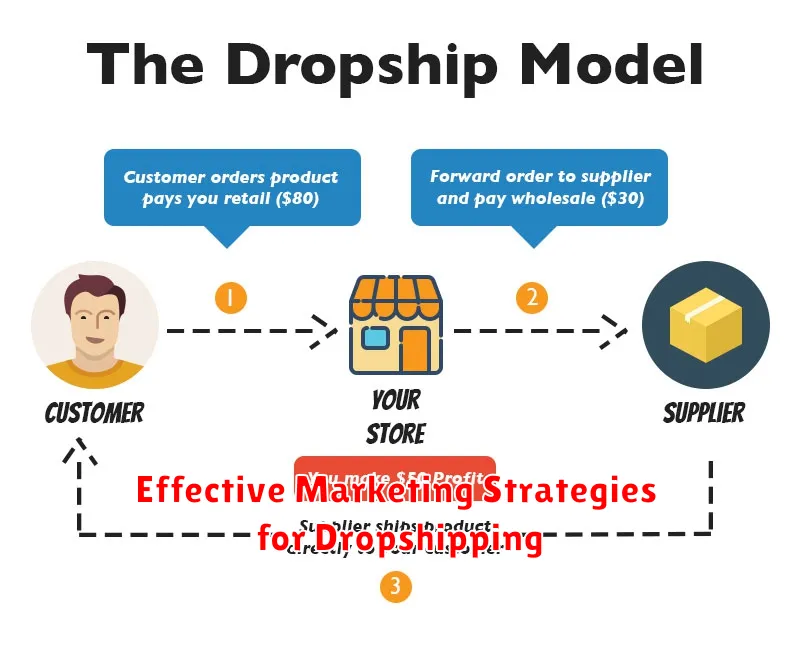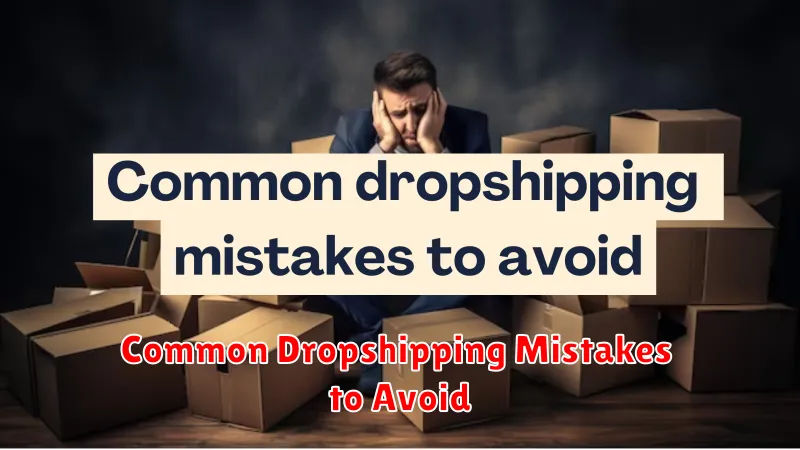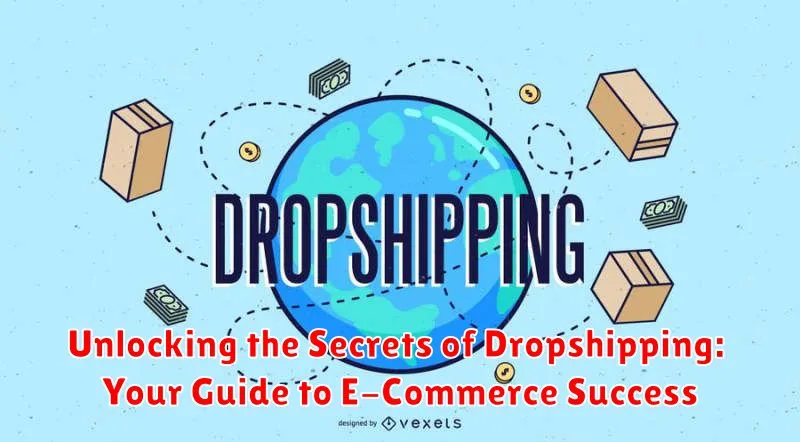Embark on a journey into the dynamic world of e-commerce with our comprehensive guide to dropshipping. Unlocking the Secrets of Dropshipping: Your Guide to E-Commerce Success provides aspiring entrepreneurs and seasoned business owners alike with the essential knowledge and practical strategies to thrive in this rapidly evolving market. Learn how to leverage the power of dropshipping to build a profitable online store without the burden of traditional inventory management. From identifying winning products and selecting reliable suppliers to mastering marketing techniques and optimizing customer service, this guide will equip you with the tools you need to achieve e-commerce success.
This comprehensive guide delves into the intricacies of dropshipping, covering key aspects such as market research, product sourcing, supplier selection, e-commerce platform setup, marketing strategies, and customer relationship management. Whether you are a novice exploring e-commerce opportunities or an experienced retailer seeking to expand your business model, Unlocking the Secrets of Dropshipping will provide invaluable insights and actionable steps to navigate the dropshipping landscape and maximize your potential for e-commerce success. Discover the secrets to building a thriving online business without the complexities of traditional inventory management.
Understanding the Dropshipping Model
Dropshipping is a retail fulfillment method where a store doesn’t keep the products it sells in stock. Instead, when a store sells a product, it purchases the item from a third party—a dropshipping supplier—who then ships it directly to the customer. This means you, as the store owner, don’t have to handle the product directly.
The key difference between dropshipping and a standard retail model is that the selling merchant doesn’t stock or own inventory. They act as a middleman, connecting the customer with the supplier. Your profit comes from the difference between the price you charge the customer and the price you pay to the supplier.
Key Players in Dropshipping
- Merchant: You, the online store owner, market and sell the products.
- Supplier: Sources, stores, and ships the products directly to the customer.
- Customer: Purchases the product from your online store.
Benefits of Dropshipping for E-commerce Businesses
Dropshipping offers numerous advantages for e-commerce entrepreneurs. One of the most significant benefits is the low startup cost. Since you don’t need to hold inventory, you eliminate the upfront investment required for purchasing and storing products.
Flexibility and mobility are also key advantages. Manage your business from anywhere with an internet connection, as you’re not tied to a physical storefront or warehouse. This allows for a more adaptable and scalable business model.
A wide product selection is another perk. Partnering with multiple dropshipping suppliers allows you to offer a diverse range of products without stocking them yourself. This can cater to a broader customer base and increase sales potential.
Finally, dropshipping simplifies order fulfillment. Suppliers handle the packaging and shipping directly to the customer, freeing you to focus on marketing, customer service, and other core business aspects.
Setting Up Your Dropshipping Store: A Step-by-Step Guide
Establishing your dropshipping store involves several key steps. First, select an e-commerce platform. Popular choices include Shopify, WooCommerce, and BigCommerce. Each offers varying features and pricing plans, so research is crucial.
Next, choose a domain name that reflects your brand and target audience. Keep it concise and memorable.
Customize your store’s design to create a professional and user-friendly experience. Select a theme that aligns with your brand and optimize it for easy navigation.
Install essential apps and plugins to enhance functionality. Consider tools for email marketing, analytics, and customer service.
Finally, rigorously test your store before launching. Verify all functionalities, including payment processing, shipping calculations, and order fulfillment.
Finding Reliable Dropshipping Suppliers
Locating trustworthy suppliers is crucial for dropshipping success. A reliable supplier ensures timely order fulfillment, quality products, and efficient communication, all contributing to positive customer experiences.
Begin your search by using supplier directories. Several reputable directories specialize in connecting businesses with dropshipping suppliers. These directories often categorize suppliers by niche or product type, streamlining your search process.
Industry events and trade shows offer valuable opportunities to meet suppliers face-to-face. This allows for direct interaction, allowing you to assess their professionalism and product offerings firsthand.
Contact manufacturers directly. Many manufacturers offer dropshipping programs, allowing you to source products straight from the origin. This can lead to better pricing and stronger quality control.
Thoroughly vet potential suppliers before committing. Check online reviews, request samples, and inquire about their order fulfillment processes. This due diligence will safeguard your business from unreliable partnerships.
Choosing the Right Products to Sell
Product selection is a critical factor in dropshipping success. Choosing the right niche and products can significantly impact your profitability and overall business growth.
Consider these key factors when selecting products:
- Demand: Analyze market trends and identify products with consistent demand. Use tools like Google Trends to gauge interest.
- Competition: Evaluate the existing competition. A saturated market can be challenging for new entrants. Look for niches with moderate competition.
- Profitability: Calculate potential profit margins. Factor in product cost, shipping fees, and marketing expenses. Aim for healthy profit margins to ensure sustainability.
- Shipping Costs: Favor products that are easy and affordable to ship. High shipping costs can deter customers.
- Supplier Reliability: Partner with suppliers who offer quality products and reliable shipping. Vet your suppliers thoroughly to avoid potential issues.
By carefully considering these elements, you can increase your chances of selecting winning products that drive sales and contribute to your dropshipping success.
Effective Marketing Strategies for Dropshipping

Targeted Advertising is crucial for dropshipping success. Focus your campaigns on specific demographics interested in your niche. Platforms like Facebook and Instagram offer robust targeting options to reach potential customers.
Influencer Marketing can significantly boost brand visibility. Partnering with relevant influencers exposes your products to a wider audience. Choose influencers carefully, ensuring their audience aligns with your target market.
Content Marketing builds trust and establishes your brand as an authority. Create valuable content, like blog posts or videos, related to your niche. This attracts organic traffic and positions you as a go-to resource.
Search Engine Optimization (SEO) helps your store rank higher in search results. Optimize your website and product descriptions with relevant keywords. This increases organic visibility and drives traffic to your store.
Email Marketing nurtures leads and encourages repeat purchases. Collect email addresses and send targeted promotions, new product announcements, and valuable content to keep customers engaged.
Managing Customer Service in a Dropshipping Business
Excellent customer service is crucial for any business, but it’s especially vital in dropshipping. Since you’re not directly handling inventory, you rely on third-party suppliers for fulfillment. This can introduce complexities that require careful management to maintain customer satisfaction.
Prompt communication is key. Respond to customer inquiries quickly and efficiently, even if you don’t have an immediate solution. Acknowledge their concern and assure them you’re working on it. Transparency is also essential. Be upfront about shipping times and potential delays. Setting realistic expectations can prevent disappointment later on.
Having a clear return and refund policy is a must. Outline the process in detail on your website, and be prepared to honor it consistently. While you might not directly handle returns, you are responsible for mediating between the customer and your supplier. This means effectively communicating the issue to the supplier and ensuring a timely resolution for the customer.
Finally, use customer feedback to improve your processes. Regularly assess your customer service performance and identify areas for improvement. Implementing feedback can enhance your operations and foster customer loyalty.
Scaling Your Dropshipping Operations for Growth
Scaling a dropshipping business requires strategic planning and execution. Automation is key. Investigate tools and platforms that automate order fulfillment, customer service responses, and marketing efforts. This frees up your time to focus on higher-level tasks.
Diversify your product offerings. Don’t rely on a single product. Explore new niches and expand your inventory to cater to a broader audience. Conduct thorough market research to identify trending products with growth potential.
Optimize your supply chain. Evaluate your current suppliers and consider partnering with additional, reliable suppliers. This mitigates risk and ensures order fulfillment can keep pace with increased demand. Negotiate favorable shipping rates and prioritize suppliers who offer fast and reliable shipping.
Reinvent customer service. As your order volume increases, excellent customer service becomes even more crucial. Consider investing in a customer service platform or hiring dedicated customer support representatives. Proactive communication and efficient issue resolution are essential for maintaining customer satisfaction and fostering loyalty.
Common Dropshipping Mistakes to Avoid

Venturing into dropshipping can be lucrative, but pitfalls exist. Avoiding these common mistakes can significantly increase your chances of success.
Poor Product Research: Failing to thoroughly research product demand and competition is a critical error. Analyze trends and identify niche markets with growth potential. Don’t rely solely on what others are selling.
Ignoring Supplier Vetting: Choosing unreliable suppliers can lead to shipping delays, poor product quality, and customer dissatisfaction. Thoroughly vet potential suppliers, checking reviews and communication responsiveness.
Neglecting Customer Service: Exceptional customer service is crucial in dropshipping. Respond promptly to inquiries and handle returns and refunds efficiently. This builds trust and encourages repeat business.
Lack of Marketing Strategy: Simply listing products isn’t enough. Develop a comprehensive marketing plan, utilizing social media, search engine optimization, and potentially paid advertising.
Overlooking Legal Aspects: Understanding sales tax regulations and consumer protection laws is vital. Consult with a legal professional to ensure compliance and avoid future issues.

